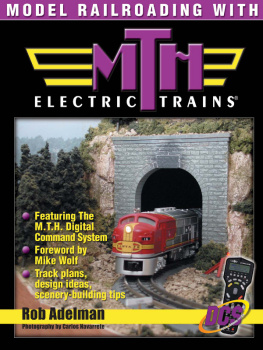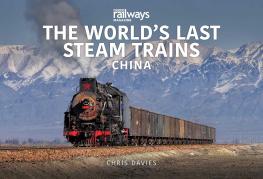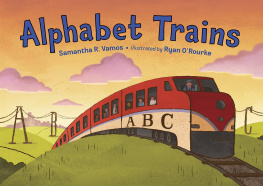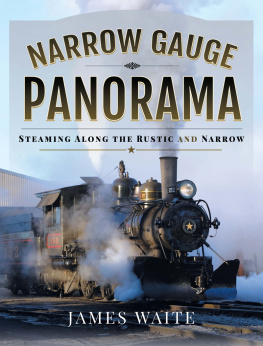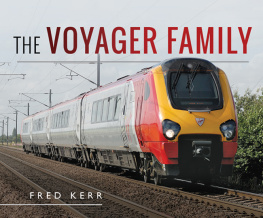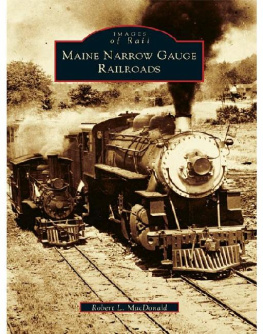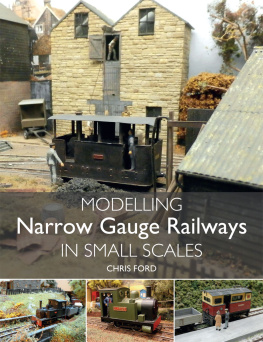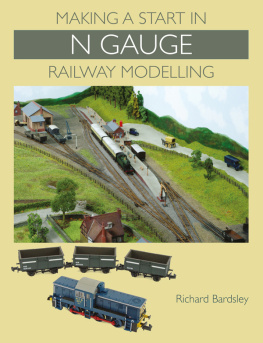CONTENTS
- Cover
- Title Page
- Table of Contents
FOREWORD
I WAS DELIGHTED WHEN Bob advised me he was writing about the history of pre- and post-war 00 gauge toy trains. This gauge has often been scantily covered in the various books on the history of toy trains.
Bob has explained what 00 gauge is and why it became the most popular gauge. He gives an insight into the exciting times in post-war Britain as the economy recovered from the devastat ion of the war.
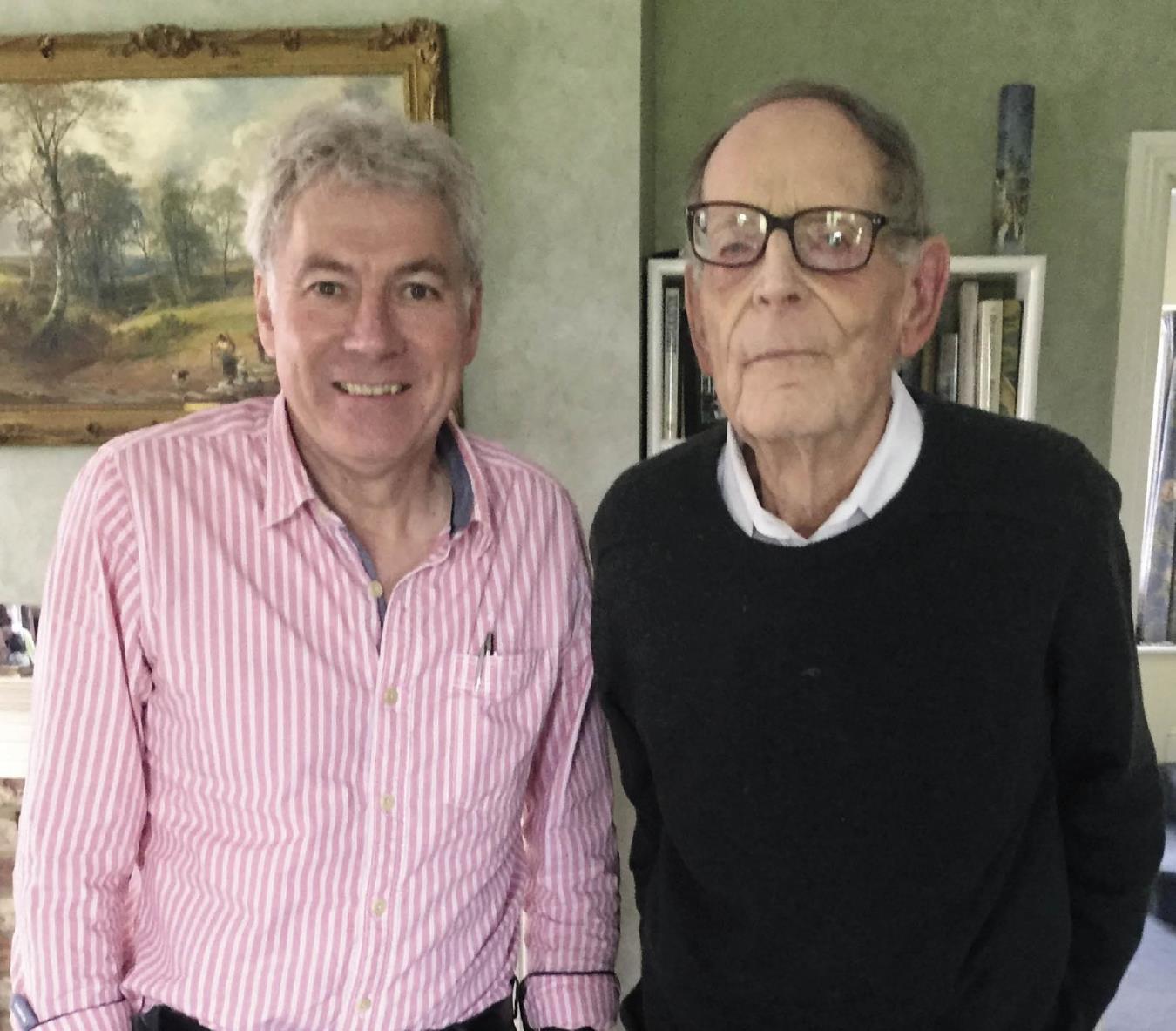
Richard Lines (right) with the author in 2018.
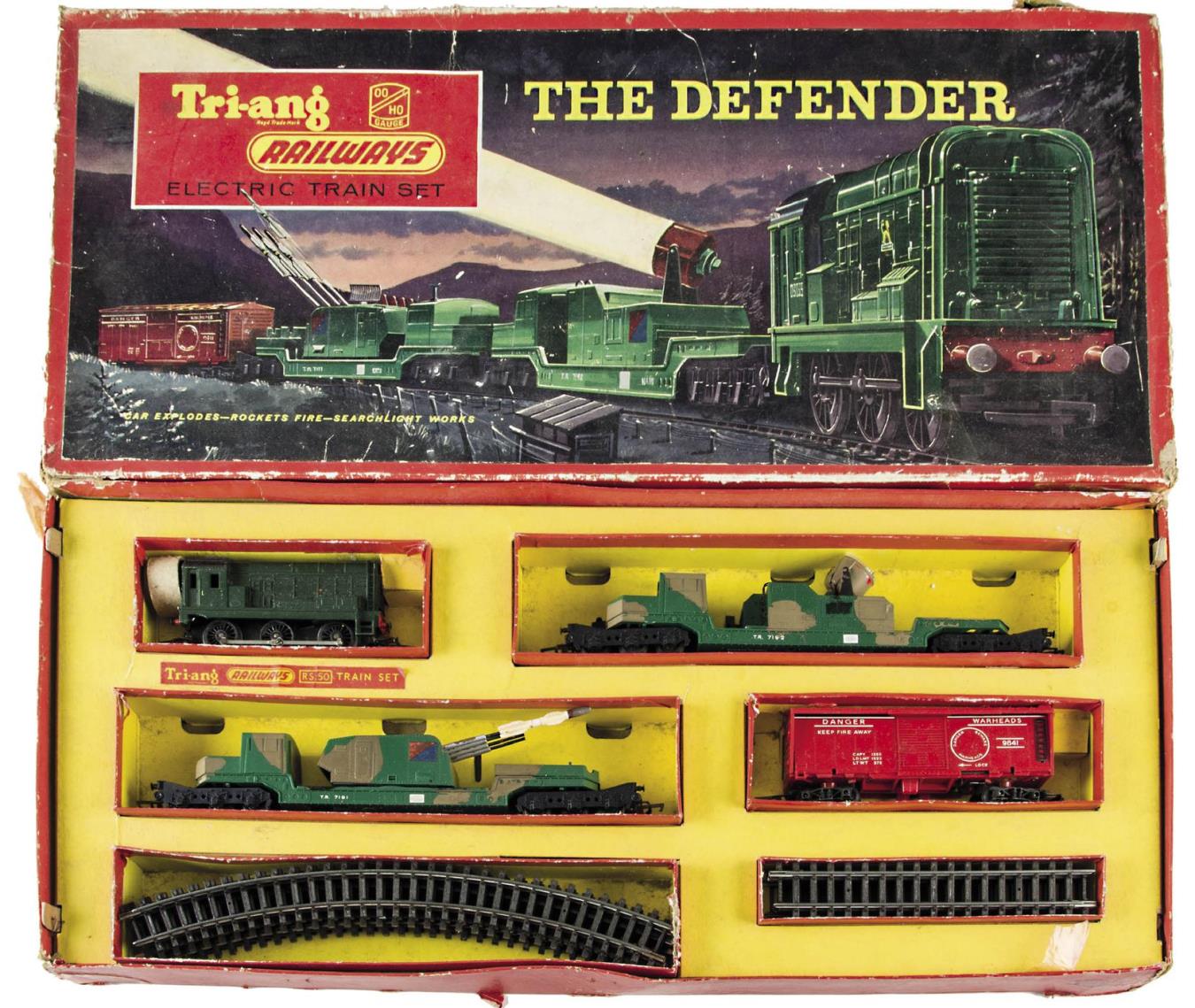
The authors well-played-with Defender set, complete with added camouflage. (See )
I was fortunate to be part of the Tri-ang Group that helped create the golden age of 00 gauge toy trains in the late 1950s and early 1960s, which gave so much joy to boys and girls.
Technology has now advanced, with finely produced models, mainly from the Far East. Digital operation has the models operating like the railways of today, so it is encouraging to know that there is still a large group of enthusiasts who enjoy playing with their original toy trains. Long may it last. Thank you, Bob, for bringing back some wond erful memories.
Richard Lines
September 2018
INTRODUCTION
T HIS B OOK TELLS the story of RTR (ready to run) 00 gauge toy trains in the UK from 1936, when Trix launched its HO/00 gauge system in the UK, until 1975. I have not included the modelling area of 00 gauge such as fine locomotive and rolling stock kits and other fine modelling accessories, although popular manufacturers with accessories for the masses have been included.
By nature of the subject, the detail about each manufacturer is quite limited, although Rovex (who made Tri-ang Railways) fills more space than most as it was the dominant manufacturer from 1955 to 1975. There are several books written about the concise history of most of the manufacturers of 00 gauge trains, and I have given a list at the end of this book. I would also like to thank all the authors who put so much time into their books and on the internet, some of whom have gladly helped me with information for this book.
Today 00 gauge is unique to the UK. Although the track width is the same as HO (half 0) gauge (16.5mm), the size of the models is to a scale of 1:72, whereas the actual scale should be smaller at 1:87, the correct scale for 16.5mm track, i.e. HO gauge.
The main reason for the discrepancy emerged in the formative days of 00 gauge, when the bodies of locomotives were enlarged to fit firstly clockwork and later electric motors. Even Marklin in Germany started in 1936 with 00 gauge before moving to HO after the war.
Technology soon developed, and continental European and American firms adapted their models to the correct scale of 1:87. In the UK, however, Trixs 1936 HO/00 gauge was closely followed by Meccanos Hornby Dublo, which entered the market in 1938 with a constant 00 scale. Other British manufacturers followed suit, and as a result the UK stands alone with 00 gauge.
During the period 195570 , the British economy was buoyant. In July 1957, Prime Minister Harold MacMillan, said in his speech at a Conservative rally in Bedford, most of our people have never had it so good. Britain had recovered from the Second World War and was just about to start the swinging sixties. A train set was on most boys Christmas list in this period, and the manufacturers filled their stock ings with glee.
This history of 00 gauge toy trains ends in 1975, as this was the year when manufacturing of 00 gauge trains for the British market first moved to the Far East. This commenced when the well-known kit maker Airfix entered the RTR market and had its models produced in Hong Kong. These models had much greater detail than the main UK manufacturer, Hornby Railways, and by using significantly lower labour costs they were considerably cheaper, becoming more model-like. For these reasons, 1975 can be seen as being the beginning of the end of the toy 00 gauge railway.
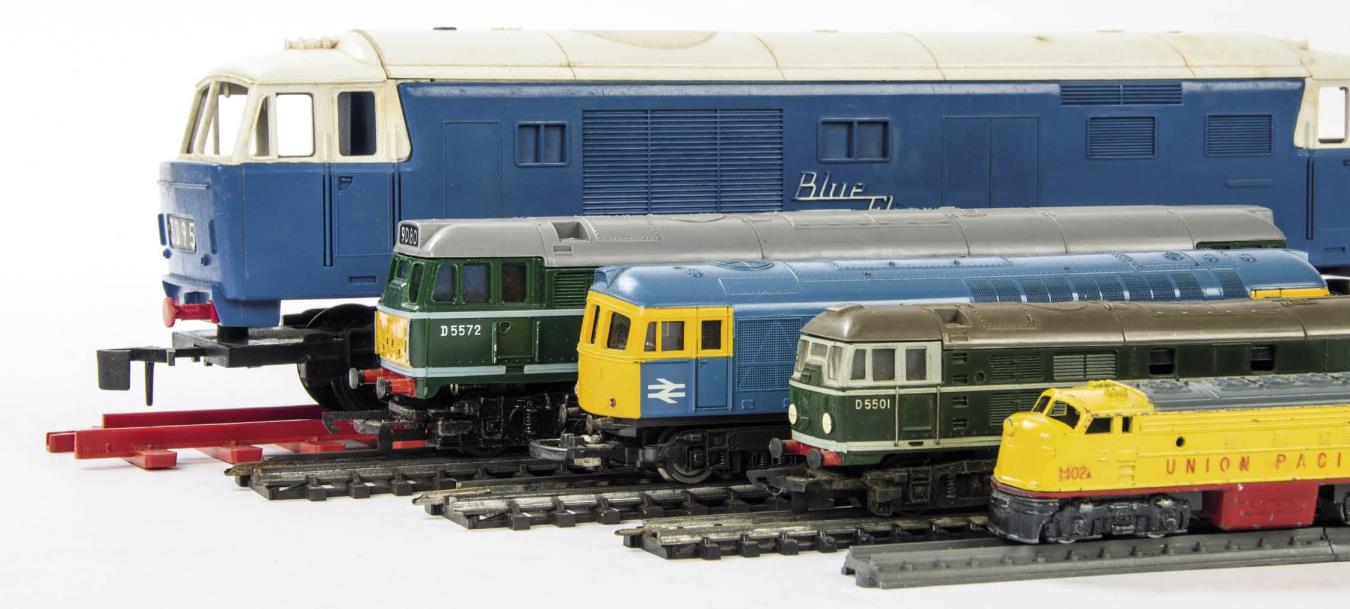
Examples of locomotives of various gauges (from front to back): O Gauge Tri-ang Hymek diesel; 00 Gauge Tri-ang A1A A1A diesel; HO Gauge Lima Class 33 diesel; TT Gauge Tri-ang A1A A1A diesel; 000/N Gauge Lone Star American diesel.
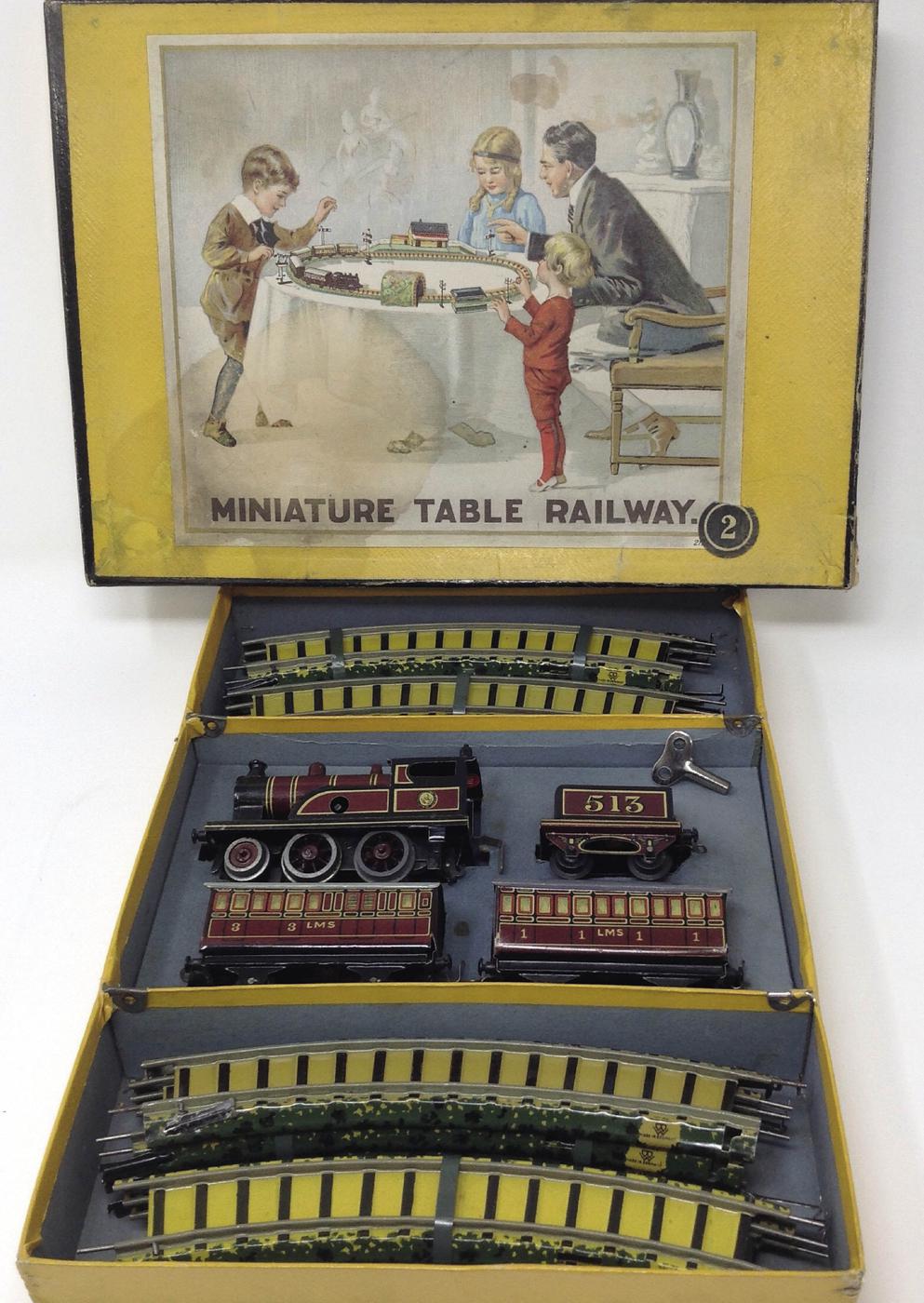
1920s Bing 00 gauge clockwork table top train set in LMS livery produced in Germany for the British market.
THE BEGINNING TO 1945
M ODEL R AILWAYS AND toy trains go back to Victorian times, when prosperous families were able to commission models directly from craftsmen and engineers and eventually from toy manufacturers, particularly in Germany from companies such as Ma rklin and Bing.
However, these models were generally large scale, from 0 gauge to gauge 3 and even larger, and very expensive. They were propelled mainly by clockwork or steam, as electric technology was not developed fully until the twentieth century. The buyers of these expensive models were generally the gentry of the day, who would have lived in substantial town and city dwellings into which large rooms and gardens the toy and model trains would easi ly have fitted.
Up until the First World War this was generally the case with most models made by German companies, many sold through the well-known British company Bassett-Lowke.
After the initial austerity following the First World War, there was a huge house-building programme in the 1920s and 30s, with Metro-land in the south and other large suburban areas being created across the UK. There was a rise in the middle class white collar workers who commuted to London and other cities, whose income was beginning to allow greater expenditure on toys, with Christmas and birthdays becoming more popular for present-givi ng to children.
The problem with toy and model trains in this context was their size. The new houses were much smaller and could not accommodate the large-scale trains and other toys that were comfortably played with in the substantial nursery rooms of the Victorian and Edwa rdian mansions.
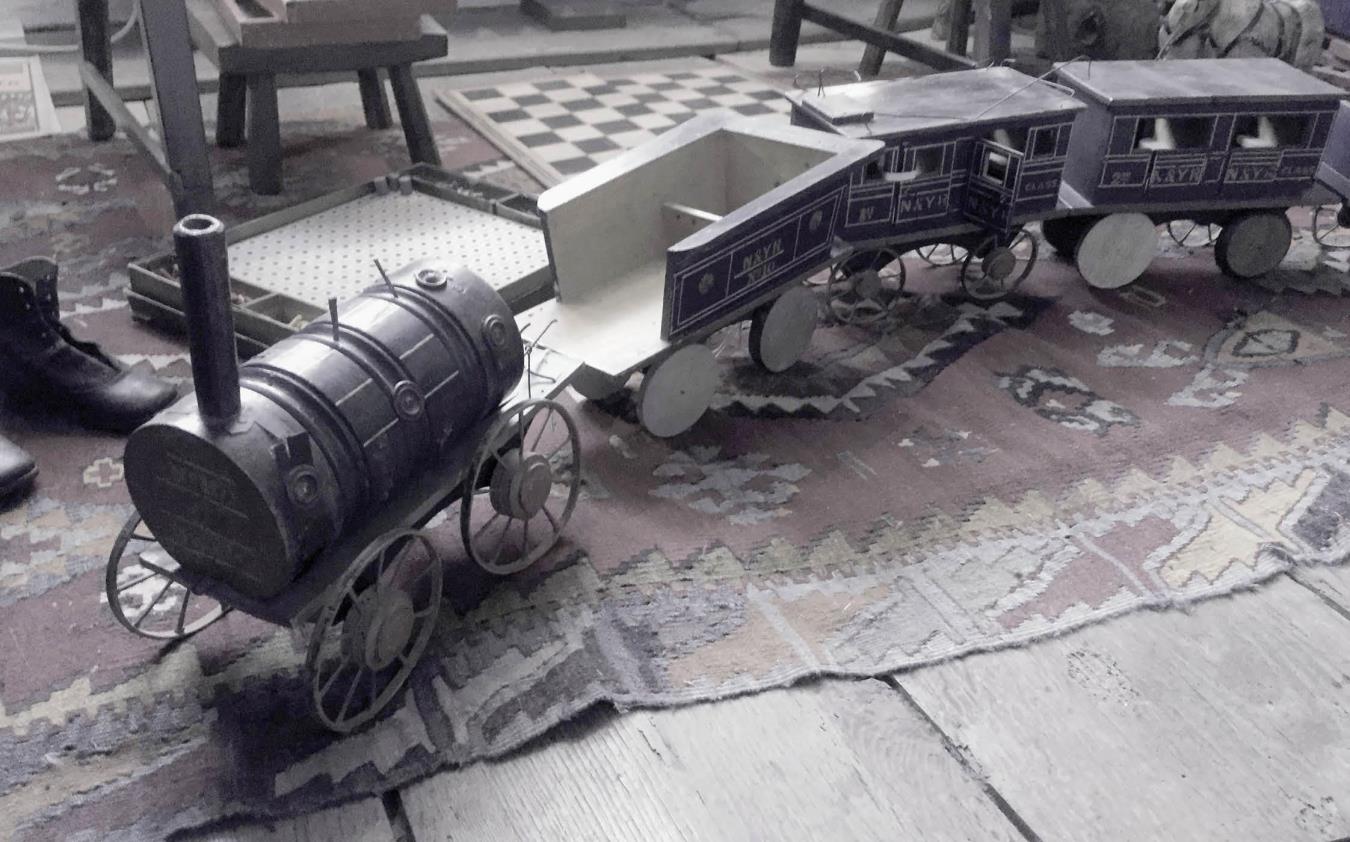
A Victorian train, c .1870s, in a reconstruction of a nursery it was probably only allowed to be played with on a Sunday, hence the excellent condition.
Companies therefore looked at building smaller train sets. In the 1920s the famous German toy maker Bing launched a new, smaller train set entitled Bing Table Top. This was approximately half 0 gauge (HO), and is widely regarded as the first smaller system made to approximately 00 scale. Almost everything was made of tin, and Bing managed to produce a fine system including locomotives, rolling stock, stations, bridges, tunnels and other items. This was a remarkable feat, as Bing used the latest technology and was able for the first time to fit both clockwork and electric motors into the small engine bodies. Clockwork remained a popular choice as mains electricity was still not available in many households. The Europeans named the smaller gauge HO (half 0).


